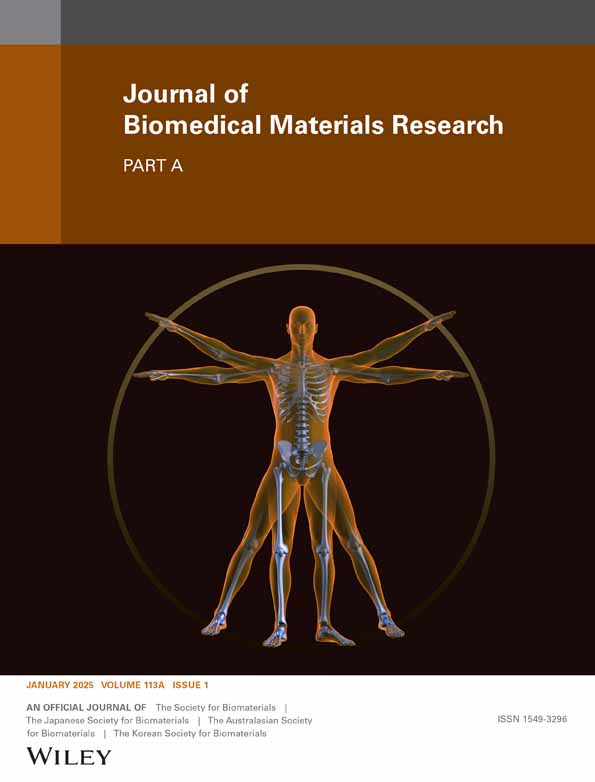Preparation, Physicochemical Characterization, and In Vitro and In Vivo Osteogenic Evaluation of Reinforced PLLA-PLCL/HA Resorbable Membranes
Abstract
This study aimed to develop reinforced poly(L-lactide)-poly(L-lactide-co-ε-caprolactone)/hydroxyapatite (PLLA-PLCL/HA) resorbable membranes for guided bone regeneration (GBR), focusing on optimizing the degradation rate by adjusting PLLA molecular weight. We aimed to achieve a balance between mechanical strength and bioactivity to enhance the efficacy of bone regeneration. PLLA-PLCL/HA membranes with varying degradation rates were fabricated by modifying the molecular weight of PLLA. The membranes were characterized using scanning electron microscopy (SEM), Fourier transform infrared spectroscopy (FTIR), andx-ray diffraction (XRD). Mechanical properties were evaluated using three-point bending tests, and in vitro cytocompatibility was assessed through MC3T3-E1 cell adhesion and proliferation. For in vivo experiments, a cranial defect mouse model was used to investigate degradation and osteogenic potential, and bone regeneration was evaluated using micro-CT, histological staining, and immunohistochemistry. The reinforced membranes exhibited superior bending strength compared to collagen membranes. The in vitro studies confirmed excellent cytocompatibility, and in vivo results showed that membranes with slower early stage degradation promoted bone regeneration, emphasizing the importance of degradation control in GBR membranes. The optimized PLLA-PLCL/HA membranes, which combine enhanced mechanical properties and controlled biodegradability, are promising candidates for clinical GBR applications.

 求助内容:
求助内容: 应助结果提醒方式:
应助结果提醒方式:


